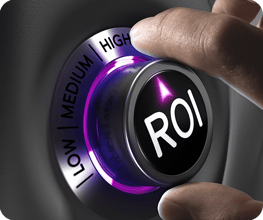
Key Focus Areas for Increasing Consumer Engagement and ROI
Table of Contents
The following is an interview with CPG and retail industry veteran and expert Rob Hand about the state of the CPG industry and the driving forces behind the intensified focus on revenue growth management, integrated business planning, trade promotion, and retailer data and advanced analytics to increase and improve consumer engagement.
ABOUT ROB HAND
Rob Hand is the founder and CEO of Hand Promotion Management (HPM), a consulting company providing domain expertise across more than 25 consumer-facing industries. Focused on consumer products and retail, he has a 45-year history of helping consumer goods manufacturers improve their trade promotion spending ROI, performance analytics, retail execution, consumer engagement efficiency, and marketing effectiveness.
Rob is a frequent podcaster, blogger, and speaker on the topics of revenue growth management (RGM) and business process innovation. He is the author of the recently published and popular book “The Invisible Economy of Consumer Engagement,” which outlines how consumer products goods (CPG) companies can achieve the highest value in both promotion ROI and consumer engagement.
INTRODUCTION
Here’s the biggest understatement you’ll read today: Over the last couple of years, the retail industry landscape and consumer behavior has changed dramatically, as well as how CPGs respond to and adapt to those changes to maintain sales, brand loyalty, and profitability.
Today, consumers have more product choices than ever, more ways to purchase products, and access to more information about a company, brand, or product—and consumer engagement continues to evolve as manufacturers and retailers seek ways to enhance promotions to be more of a major influencer in consumers’ purchasing decisions and loyalty. The big question is … what can CPGs do via data, technology, processes, and strategies to ensure they deliver the right products, pricing, and promotions to achieve optimal consumer engagement, win at the physical and digital shelves, and maximize revenue growth?
Recently, I caught up with Rob to get his perspective on the current state of the CPG industry and what critical business areas and issues he believes CPGs need to focus on and master to drive successful consumer engagement and long-term, profitable growth.
Please note: This is part one of a two-part interview. In this blog post, we’ll discuss the current state of CPG and the driving forces of change around RGM and the focus by C-suite personnel on integrated business planning (IBP) and trade promotion. Part two will cover how these areas MUST lead to consumer engagement success and why high-quality data and precise analytics is critical to achieving that goal.
To make sure you don’t miss out on part two of our interview with Rob Hand or miss out on other Retail Velocity blog posts and company news, sign up for our emails using the form at the bottom of this page.
Questions and answers with rob hand
You’ve been ingrained in the CPG industry for decades and naturally, have seen your share of industry trends and shifts. What changes are you seeing now, and what areas or issues are CPG manufacturers most concerned about and focused on?
What we’re seeing now is a renaissance in consumer goods around three mission-critical business issues: revenue growth management; trade promotion spending ROI; and the precision, trust, and cost of data. All of which are equally important to suppliers.
With the pandemic mostly behind us, the pain suffered in the supply chain and the radical and accelerated shift towards more online shopping caused serious paradigm shifting across the way demand and promotion planning are done, the accuracy of forecast baselines, and the speed with which performance analysis must be done. Even before the pandemic, there was visible movement within corporate CPG leadership to begin expanding the traditional RGM organization by bringing functions like trade promotion, product assortment mix management, pricing, and retail execution under the RGM responsibility and control.
RGM has seen global escalation of importance and focus among ALL consumer goods companies. CPGs are now creating executive-level RGM positions, even at the C-level, to enhance and empower better IBP and ensure strategic alignment across key functional areas. There’s also a strong focus on increasing collaboration among supply chain, logistics, e-commerce, direct-to-consumer marketing, and digital advertising and promotions, which will also help maximize revenue growth.
Trade promotion continues to be a top concern for CPGs not only because it’s a critical component of improved IBP but also because it’s now one of the top three focus areas for a company’s digital transformation and is a financial mandate for cost reduction and increased ROI. The majority of a sales organization will claim the purpose of trade promotion is to serve as an incentive for the sell-in—volume, revenue, and profitability. But we are seeing more focus on using trade promotions as a significant consumer engagement tactic, which will lead to more collaborative planning between sales, marketing, supply chain, and the retailer to drive higher consumer traffic and loyalty.
The third focus area is data quality and integrity. With the “Big Data” initiatives of the past two decades maturing, the demand for advanced artificial intelligence (AI) and machine learning (ML)-driven predictive analytics is increasing. These new technologies are enabling more accurate forecasts and projections of revenue and profitability in trade promotions. Securing and leveraging more accurate, cleaner, harmonized, and aligned data also includes reducing the timing of the data delivery, which today means daily POS data and consumption intelligence.
You mentioned the enhancement of integrated business planning. What have you observed in the consumer products industry about how IBP is being managed and utilized in today’s annual planning process?
Traditionally, annual planning has been a long, tough, and often frustrating activity across the entire enterprise. By its very definition, the “integrated business plan” is a consolidation of operational plans from each major operating area of the company, including sales, marketing, supply chain, finance, IT, manufacturing, and operations. The data across each of these areas is heavily siloed and unaligned. Too much time is spent by too many people trying to harmonize and align the data. Developing a single forecast and operating plan can be derived much more effectively, especially if demand planning is included, and it will be much more accurate. This effort to achieve a unified corporate operating plan is monumental.
"71% of the leading CPG companies spend between six and 12 weeks in the IBP process, with more than half of that number at the longer end of that range."
It's now being recognized as a key problem area that must be addressed and solved so it is not such a difficult, costly, and time-consuming activity. 71%1 of the leading CPG companies spend between six and 12 weeks in the IBP process, with more than half of that number at the longer end of that range, so it is an expensive proposition to get to an agreed-upon business plan and forecast.
1 2022 HPM Survey on Trade Promotion
What’s driving the creation of executive-level RGM positions to better address the blurred line between IBP and RGM?
The channels of distribution are the primary revenue drivers, right? If you think about the historical problems with siloed data being used for promotion plans, pricing, product mix, and assortment management across the different channels, you can see how a consolidation of these key revenue generators makes good business sense. Today, responsibility for leading the IBP process is spread across multiple departments, with finance accounting for 36% of IBP ownership in CPG companies.2 But with RGM beginning to manage more of the major revenue generation processes, it could be the best future choice to manage the IBP process.
Having a single entity lead an ongoing, holistic planning process that relies heavily on precise data with disciplined analytics and that aligns priorities, strategies, and KPIs will improve the various levers and revenue-drivers across the entire enterprise and drive long-term, profitable growth. This will involve changes to many internal processes, but it will also require a mindset shift across a company.
2 2022 HPM Survey on Trade Promotion
Regarding those major operating areas, what types of changes can they expect with the evolution of RGM, and how can they properly prepare for them?
Traditional functions of RGM include price optimization, product assortment planning, and mix management, but RGM is expanding to include management and execution of trade promotions and retail execution as direct reporting functions. This will enable more direct and deeper analysis of performance, planning, and execution, as well as more accurate and timely management of the second largest line item in the corporate financials—trade promotion spending.
Being able to coordinate the field merchandising and execution at retail helps to validate compliance, avoid out-of-stock conditions, optimize retail replenishment, and provide a real-time view of the promotion as it is being executed instore. This intelligence enables visibility into the promotion’s daily progress, which can signal a poor performing promotion so immediate action can be taken to remedy the situation and maximize ROI. Viewing the execution as a natural extension of the trade promotion planning process helps create better intelligence for new technology like trade promotion optimization and predictive modeling.
CPG companies expanding RGM roles will need to staff key planning and analytics positions that focus on what it takes to generate revenue and profitability while maintaining strong consumer engagement.
Besides the core functional areas within RGM, what other business areas will play a part in evolving the RGM process, and what kind of impact can they have?
More dotted-line relationships are being mandated between RGM and other key areas like finance, sales, marketing, supply chain, logistics, warehousing, and manufacturing. Establishing these relationships will enable the consolidation of all necessary data required to accurately analyze consumption patterns; predict and respond to consumer behavior changes and trends; and optimize on-shelf availability, product assortment, and pricing.
Leading CPGs are giving more authority to RGM to be included in key planning communities within these groups, to have a real seat at the table and a voice in the planning process; this is how the CPG can become more collaborative internally and more proactive than reactive in strategic decision-making.
Revenue growth management can be a major transformation for a consumer goods company and will undoubtedly come with unique challenges. We’ve already seen the profoundly negative effect of supply chain disruptions and the rise in popularity of direct-to-consumer sales. What are some of the biggest challenges CPGs will face in implementing a successful RGM program?
I see four barriers to establishing a modern and successful RGM practice. The first would be domain expertise. In today’s consumer-facing environment, understanding the full scope of the “value chain” for CPG within the distribution channels requires individuals with a wide range of experience: supply chain, trade promotion, price management, category and product management, and of course, strong leadership skill sets. Also, online sales and physical retail store experience would be a plus.
Second, I see technology as a major issue. Specifically, the largely siloed data and analytics platforms that are poorly defined and underutilized throughout the entire organization create nightmares for those who are responsible for consolidating and aligning business intelligence into a single set of requirements, plans, and forecasts necessary for an annual business plan. No one system accommodates the IBP process, and the data, especially POS data, across these organizations is neither clean nor harmonized or normalized and certainly not aligned. This is a critical problem that must be addressed immediately.
Third, and unfortunately, I see politics playing the spoiler role. Putting one individual or one organization in charge of the corporate business planning and revenue-generation decisions is always going to be a difficult decision for the C-suite to make. While it definitely needs to be made, the essence of a modern RGM organization has to be the leadership of the IBP process, and therefore, will command a great deal of respect and collaborative cooperation from all other business unit leaders. This is a sensitive topic.
Finally, the issue of how best to engage the consumer is becoming one of the most important decisions to be made by CPGs of all sizes. While determining the most viable distribution channels to financially support has always been a competitive issue, the post-COVID increases of direct-to-consumer channels have forced significant changes in the internal competition for budgets and resources. E-commerce channels are growing at a significant rate over brick-and-mortar partners, and RGM leadership will have to make hard choices for where and when to put the huge marketing budget allocations.
"Estimates are that trade spending will exceed one trillion dollars globally by 2025, so every CFO has the efficient and effective use of this money in the center of their radarscope for financial improvement."
Let’s talk about trade promotion management. What do you attribute the recent push at the highest levels of CPG leadership for trade promotion as a priority of digital transformation?
As I stated earlier, trade promotion management, execution, and analytics (TPx) is one of the top priorities for CPG companies. In fact—and it’s important to point this out—TPx is a serious issue for any and all manufacturers/suppliers that sell through all distribution channels. The reason is simple: we are talking about a LOT of money. Estimates are that trade spending will exceed one trillion dollars globally by 2025, so every CFO has the efficient and effective use of this money in the center of their radarscope for financial improvement.
Leading consumer products companies are also beginning to leverage trade and co-op funds to improve overall consumer engagement and make the success of each promotion a more critical factor in their ROI metrics. We now see more innovation including alignment between traditional sales-led trade and channel promotions and corporate marketing, direct-to-consumer, and e-commerce sales events.
The cost of managing trade promotion has skyrocketed, which has created an entirely new category of high-tech solution vendors building solutions for all aspects of TPx, especially around advanced analytics and AI/ML-driven predictive planning. For the first time in my professional lifetime, I am seeing TPx solution development become a top investment by global venture capital and investment banking firms. This recognition of the potential for huge revenue generation has a firm foundation in the fact that the focus of the C-suite on TPx is now a universally accepted norm.
FINAL THOUGHTS and takeaways
The pressure for CPG manufacturers to work smarter and more efficiently to better engage and retain consumers isn’t going away anytime soon. Online shopping will continue to increase, as will consumers’ needs and expectations from companies, brands, and their products. If CPGs want to meet and exceed those expectations, provide the greatest value, and maximize revenue growth, they’ll need to better understand and connect more directly and more quickly with consumers—and that will take a unified enterprise effort.
An optimal strategy for achieving profitable growth will require CPGs to rapidly evolve and mature from operating in functional silos, using disparate data for decision-making, and being directed by different KPI’s and priorities to consistently leveraging clean, harmonized data for actionable insights; operating from a single forecast and business plan; and executing fully aligned, agreed-upon go-to-market strategies that focus on long-term growth.
Here are three steps CPGs can take to get started down the path of more profitable growth:
- Install executive-level RGM leadership to establish and lead an ongoing, holistic planning process based on the most timely, accurate, and reliable retail data, reporting, and analytics.
- Adopt and foster a revenue growth management mindset across the entire organization to ensure optimal integrated business planning.
- Better incorporate and leverage TPx as a significant consumer engagement and consumer loyalty tactic, and make promotion success a more important factor in ROI evaluation and metrics.
Reminder: In the upcoming part two of our interview with Rob Hand, we’ll dive deeper into how to achieve consumer engagement success and why precise retail data and analytics are critical in helping CPGs generate the highest return on investment.
Scroll down to subscribe to our emails and get notified when part two is posted.
If you want to learn more about how POS data can play an integral part of your RGM and IBP strategies, reach out to us today.



